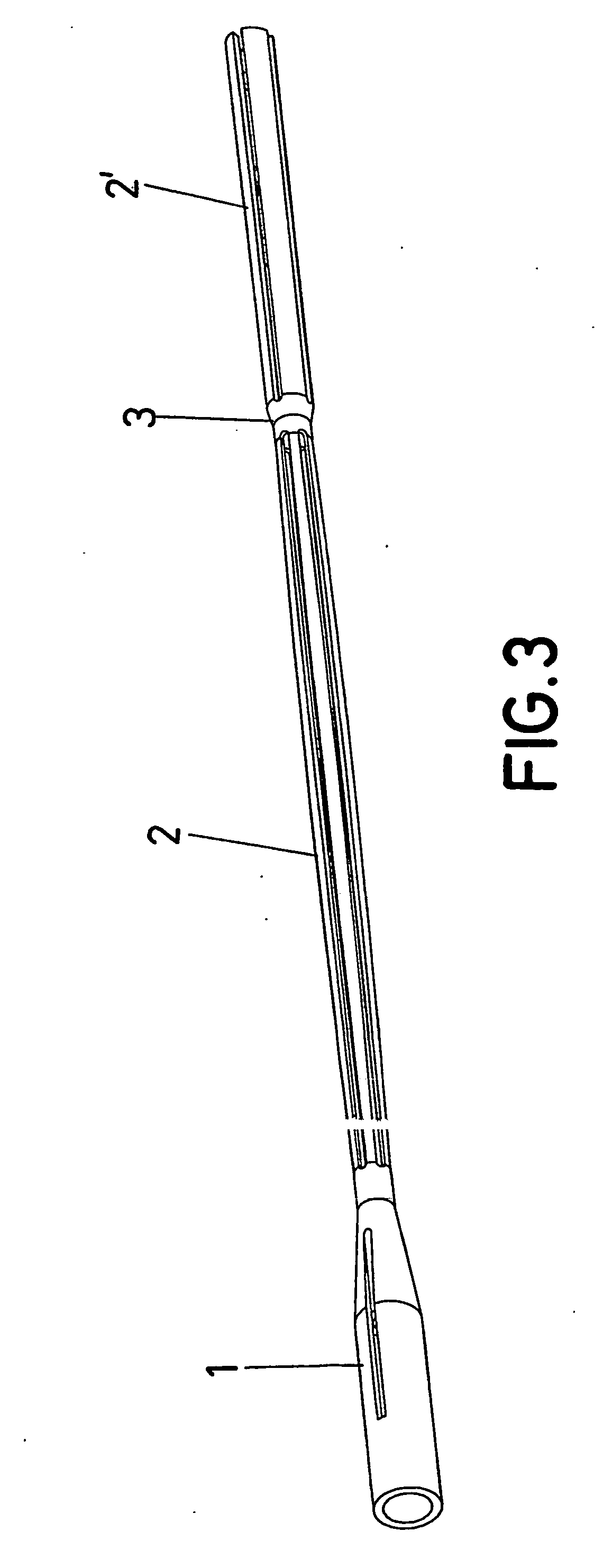Intramedullary Nail
a technology for intramedullary nail and nail, applied in the field of intramedullary nail, can solve the problems of excessive damage to the spongy part, difficult to line up said screws with the holes in the nail, and the difficulty of implanting said cross screws is considerably more pronounced
- Summary
- Abstract
- Description
- Claims
- Application Information
AI Technical Summary
Benefits of technology
Problems solved by technology
Method used
Image
Examples
Embodiment Construction
[0016] The intramedullary nail proposed by the invention successfully solves the above-described problems in each of the aspects that have been mentioned.
[0017] More specifically, to do this said nail consists of a functional combination of a nail and a probe that can move axially inside the nail, the purpose this probe being to cause a radial deformation of the nail, so that this need only be fixed by screws at the proximal end of the bone, whilst it is fixed at the distal end by said expansion effect.
[0018] This is achieved thanks to the fact that the nail itself has a plurality of filaments extending from a head at its proximal end, which are disposed according to an imaginary cylindrical surface and which converge at a node that is considerably distanced from the head, beyond which said filaments extend in a wide section, the probe including a marked protrusion close to its distal end, so that, once the nail-probe assembly has been implanted inside the bone, as the probe moves...
PUM
 Login to View More
Login to View More Abstract
Description
Claims
Application Information
 Login to View More
Login to View More - R&D
- Intellectual Property
- Life Sciences
- Materials
- Tech Scout
- Unparalleled Data Quality
- Higher Quality Content
- 60% Fewer Hallucinations
Browse by: Latest US Patents, China's latest patents, Technical Efficacy Thesaurus, Application Domain, Technology Topic, Popular Technical Reports.
© 2025 PatSnap. All rights reserved.Legal|Privacy policy|Modern Slavery Act Transparency Statement|Sitemap|About US| Contact US: help@patsnap.com



